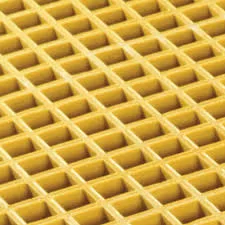loading...
- No. 9, Xingyuan South Street, Dongwaihuan Road, Zaoqiang County, Hengshui, Hebei, China
- admin@zjcomposites.com
- +86 15097380338
- Welcome to visit our website!
Exploring the Characteristics and Applications of Marine Grating Systems in Coastal Engineering
The Significance of Marine Grating in Modern Maritime Applications
Marine grating, a critical component in various maritime applications, plays a significant role in enhancing safety, efficiency, and sustainability within the marine industry. This versatile material, often made from fiberglass, steel, or aluminum, is primarily utilized in shipbuilding, offshore platforms, docks, and other coastal structures. Understanding its functionalities, benefits, and applications can provide valuable insights into its importance in contemporary maritime practices.
What is Marine Grating?
Marine grating refers to a type of flooring system characterized by its open grid structure, allowing for a lightweight yet sturdy framework. It is designed to withstand harsh environmental conditions, including saltwater, high humidity, and UV exposure, making it ideal for marine settings. The grating systems come in various configurations, such as molded or pultruded fiberglass, with steel and aluminum also being popular choices due to their strength and durability.
Key Benefits of Marine Grating
1. Safety One of the primary advantages of marine grating is its ability to provide a safe walking surface. The open design allows for drainage, minimizing slip hazards caused by water accumulation. Additionally, the materials used often have anti-slip properties, further enhancing safety, especially in wet marine environments.
2. Durability Marine grating is engineered to endure the rigors of marine environments. The materials used are resistant to corrosion, rust, and degradation from harsh chemicals, making it an excellent long-term investment for maritime structures. This durability helps reduce maintenance costs and downtime, contributing to overall operational efficiency.
3. Lightweight and Versatile The lightweight nature of marine grating makes it easier to handle and install compared to traditional solid materials. This feature is particularly beneficial in offshore applications, where weight savings can translate to significant cost reductions in transportation and installation processes. Moreover, marine grating can be customized to suit a variety of applications, from walkways and platforms to drainage covers and stair treads.
4. Sustainability As the marine industry increasingly focuses on sustainable practices, marine grating has emerged as a favorable choice. Many grating systems, especially those made from fiberglass, can be produced using recycled materials, contributing to reducing the carbon footprint of maritime operations. Additionally, the longevity of these materials means they need to be replaced less frequently, further minimizing environmental impact.
marine grating

Applications of Marine Grating
Marine grating finds a wide array of applications across the maritime sector
- Shipbuilding and Repair In shipyards, marine grating is used for staging, walkways, and workspace platforms, providing workers with a safe and stable surface during the construction or repair of vessels.
- Offshore Platforms With their ability to withstand extreme conditions, marine grating is ideal for offshore oil rigs and wind farms, where durability and safety are paramount.
- Docks and Marinas Grating systems are commonly used for docks, providing non-slip surfaces for mooring and loading activities. Their open design allows for water drainage, preventing erosion and maintaining stability.
- Coastal Structures Marine grating is also employed in coastal infrastructure, such as retaining walls, observation decks, and floating platforms, enhancing both functionality and aesthetic appeal.
Conclusion
In conclusion, marine grating represents a pivotal innovation in maritime engineering, providing essential benefits that enhance safety, reduce maintenance costs, and promote sustainability. Its versatility allows it to be utilized across various applications, making it an indispensable component of modern marine infrastructure. As the industry continues to evolve, the significance of marine grating is likely to grow, reflecting the ongoing commitment to improving safety and efficiency in maritime operations. Embracing such innovative materials will ultimately contribute to a more resilient and sustainable marine environment.
-
Transform Your Spaces with FRP Grating SolutionsNewsNov.04,2024
-
The Versatility and Strength of FRP RodsNewsNov.04,2024
-
The Excellence of Fiberglass Water TanksNewsNov.04,2024
-
The Benefits of FRP Grating for Your ProjectsNewsNov.04,2024
-
Elevate Your Efficiency with FRP Pressure VesselsNewsNov.04,2024
-
Welcome to the World of FRP Pressure VesselsNewsOct.12,2024
-
Unveiling the Future of Filtration: Why FRP Filter Vessels are a Game ChangerNewsOct.12,2024
